Træd ind i et rum og mærk dets varme eller livlige energi. Hvad ligger der bag denne stemning? Velkommen til "Varm eller varmere? Et opgør mellem 2700K og 3000K belysning." Belysning gør mere end bare at gøre ting synlige. Det påvirker også, hvordan vi har det, og atmosfæren på et sted. Det kan forvandle det almindelige til noget ekstraordinært. At vælge mellem 2700 kelvin og 3000 kelvin kan ændre dit hjem eller arbejdsmiljø.
Vi kan se, hvordan farver påvirker atmosfæren i vores hjem, kontorer og spisesteder. Det er ikke bare tal på Kelvin-skalaen, men essensen af et rums atmosfære. De står som tavse arkitekter og påvirker vores daglige oplevelser.
Tom, som har været ekspert i LED-belysning siden 2005, leder denne rejse. Han ved meget om farvetemperaturer, fordi han både har studeret og arbejdet med dem. Han har udviklet denne sammenligning for at hjælpe dig med at se belysning på en ny og inspirerende måde.
Er du klar til at finde den perfekte belysning til dine rum? Uanset om det er den beroligende 2700 kelvin eller den energigivende 3000 kelvin, så lad os dykke ned i det. Vi ser på forskellige farvetemperaturer for at hjælpe dig med at vælge til alle dele af dit liv.
Forståelse af farvetemperatur
Hvad er Kelvin-skalaen?
Kelvin-skalaen måler lysets farvetemperatur. Fysikeren Lord Kelvin har lagt navn til den. Skalaen går fra de varme røde toner til de køligere blå nuancer. Ændringen i farvetemperatur påvirker energi, humør og den overordnede farve. Både 2700K og 3000K falder ind under den varme kategori. De afgiver en blød gullig glød, som stearinlys eller en hyggelig pejs. Dette område fremmer intimitet, afslapning og hygge i rum.
Hvordan farvetemperatur påvirker humør og funktion
Belysning gør mere end blot at oplyse vores omgivelser. De forskellige nuancer af lys kan i høj grad påvirke, hvordan vi ser og gør ting i et rum. 2700K-serien skaber en beroligende atmosfære som en gylden sol. Det er perfekt til afkobling og afslapning. 3000K-spektret er lysere og mere neutralt, perfekt til læsning, madlavning eller andre opgaver. Ændring af farvetemperaturen kan skabe forskellige stemninger og funktioner i forskellige miljøer.
Forskelle mellem 2700K og 3000K forklaret
Umiddelbart kan 2700K- og 3000K-temperaturer virke meget ens. Men disse små forskelle har stor indflydelse på, hvordan et rum ser ud, føles og fungerer. 2700K-lyset giver en blød, beroligende glød til rolige områder. 3000K-lyset er lysere og klarere og hjælper dig med at se bedre og fokusere. Valgene er vigtige for, at rummet skal være nyttigt og behageligt, ikke bare personlige præferencer. I det følgende ser vi på disse vigtige forskelle og hjælper dig med at træffe kloge valg.
Hvad er farvegengivelse?
Ud over lysets varme eller kølighed er et andet vigtigt aspekt farvegengivelse. En lyskilde kan vise objekters farver nøjagtigt, ligesom naturligt lys. En højere CRI kan få ting til at se mere levende og klare ud og afsløre deres sande skønhed. I modsætning hertil kan en lavere CRI forvrænge eller sløre udseendet og få farverne til at virke skæve eller unaturlige. Det er vigtigt at kunne se farverne korrekt i kunstgallerier, køkkener og butikker. Forståelse af farvetemperatur og farvegengivelse viser, hvordan belysning både er praktisk og stemningsskabende.
2700K - et nærmere kig
Karakteristik af 2700K-belysning
Vi vælger det varme, let gule lys på 2700K, fordi det er behageligt og individuelt. Lyset minder om levende lys og skaber en hyggelig og rolig stemning. Til arbejdsbelysning vælger folk ofte hårdere toner. Men lysfarven 2700k giver en blidere oplevelse. Om aftenen kan denne farvetemperatur få et rum til at føles afslappende og hjælpe os med at slappe af.
Hvor og hvornår skal man bruge 2700K?
I hjemmet
Læsesale: De har en hyggelig, varm atmosfære med blid belysning på 2700K. Det skaber et fredeligt sted at læse. Det oplyser siderne uden at blænde øjnene og gør læsningen til et beroligende ritual.
Soveværelser: Når man skal sove, spiller belysningen en afgørende rolle. 2700K skaber en beroligende atmosfære, der hjælper dig med at slappe af og falde i søvn om aftenen.
Pejs: Det ser endnu hyggeligere ud med varm belysning, der får flammerne til at danse.
På kontoret
Receptionsområder: Førstehåndsindtryk er vigtige, og belysning kan være afgørende for dem. Receptionsområder kan føles indbydende og behagelige med et varmt, indbydende skær af 2700 Kelvin-lys. Det er mere end belysning; det er en uudtalt hilsen.
Faren for blåt lys ved 2700K
I en tid, hvor vi er omgivet af skærme, er faren for blåt lys et problem, som mange er opmærksomme på. Det er forbundet med forstyrrelser i søvnmønstre og anstrengte øjne. Men det varme lys på 2700K udgør ikke en sådan risiko. Dette lys er ikke i det blå spektrum, så det vil ikke forstyrre din søvn eller belaste dine øjne. Denne funktion er fantastisk til belysning om natten. Det fungerer godt i rum, der fokuserer på afslapning og velvære. For at forstå denne egenskab skal man ikke bare vælge en pære. Det handler om at leve i harmoni med naturen og tage sig af hele sig selv.
3000K - Udforsk den varmere side
Egenskaber ved 3000K-belysning
3000K-lys har et varmt og afbalanceret lys, der føles moderne og funktionelt. De er mindre gullige end 2700K-lys. Disse lamper er varme og neutrale, hvilket gør dem alsidige og tilpasningsdygtige. De kan give dig god belysning til opgaver og stadig se godt ud i rummet. 3000K blander ubesværet nøjagtighed og hygge i stilfulde hjem og travle forretningsområder.
Hvornår skal man vælge 3000K?
Moderne opholdsrum
Ved madlavning og tilberedning af måltider er nøjagtighed og klarhed i køkkenet meget vigtigt. 3000K-belysning er skarp og perfekt til præcis hakning og tilsmagning. Det er ikke for skarpt. Det giver et moderne look, der supplerer apparater i rustfrit stål og skarpe bordplader.
For at gøre et rum til et effektivt arbejdsområde skal belysningen stimulere øjnene, men ikke trætte dem. 3000K forvandler rum ved at skabe en varm glød, der øger produktiviteten.
Indstillinger for gæstfrihed
Restauranter er der, hvor 2700K og 3000K på smukkeste vis kan bidrage til den kulinariske verden. 2700K skaber en hyggelig atmosfære i spiseområdet, mens 3000K lysfarve hjælper kokkene i køkkenet. Madlavning er mere end bare mad; det handler om at skabe en oplevelse. Den rigtige belysning sætter stemningen.
Effekt af blåt lys og søvncyklusser
I en tid, hvor skærme er udbredte, diskuteres frygten for blåt lys' indvirkning på søvnkvaliteten ofte. Mens det gælder for skærme, er 3000K-lys langt væk fra sådanne bekymringer. Skærmene forbliver køligere og hjælper dig med at sove bedre med den rette mængde varme. At vælge 3000K handler ikke kun om udseende, det handler om at værdsætte vores sundhed og daglige rutiner.
At udforske 3000K afslører en verden, hvor belysning er mere end blot funktionel. Du kan bruge det til at gøre almindelige steder fantastiske og påvirke, hvordan folk ser tingene. Du kan også skabe oplevelser. 3000K er afgørende for det moderne liv, uanset om det er i et travlt køkken eller på et roligt kontor.
H2: Sammenligning af 2700 vs 3000 Kelvin
En sammenligning side om side
Her er en tabel, der tydeliggør forskellene:
| Funktion | 2700K | 3000K |
|---|---|---|
| Stemning | Afslappende | Funktionel |
| Brug | Hjem | Kontor |
De små forskelle mellem 2700K og 3000K har stor indflydelse på de oplyste områder. Den varme belysning på 2700K skaber en hyggelig atmosfære, som i en indbydende stue. Belysningen på 3000K er mere praktisk og giver bedre klarhed på kontorer.
Indvirkning på energieffektivitet
LED-lys med 2700K og 3000K er effektive, men det er ikke ligegyldigt, hvad de bruges til. Varmen fra 2700 K kan reducere behovet for opvarmning om vinteren, hvilket gør det mere energibesparende. Det skarpe lys på kontorer med en temperatur på 3000 K kan øge produktiviteten. Det kan føre til kortere arbejdstid og spare energi.
Brugeroplevelse og feedback
I belysningsverdenen indtager 2700K og 3000K unikke roller. 2700K bruges ofte i soveværelser og stuer for at skabe en beroligende atmosfære. På den anden side bruges 3000K ofte på kontorer, i laboratorier og i køkkener til præcise opgaver.
Bonus tips: Information om farvetemperatur
For at forstå farvetemperaturen skal man kende stemningen og funktionen i et rum. 2700K har en tendens til at indgyde en følelse af varme og afslapning, der minder om en blid omfavnelse efter en lang dag. 3000K hjælper dig med at koncentrere dig og være præcis, hvilket gør det klart til specifikke opgaver. Når du forstår disse detaljer, kan du tilpasse dine valg til hvert enkelt rum. Det vil skabe rum, der ser ud og føles perfekte.
Hvilken farvetemperatur passer til rummene i dit hjem?
At vælge den rigtige farvetemperatur til hvert rum i dit hjem kan gøre en stor forskel. At vælge mellem 2700K og 3000K belysning afhænger af mere end bare personlige præferencer. Det handler om at matche lysstyrken med formålet og atmosfæren i hvert rum.
3000K VS 2700K til køkkener, badeværelser, stuer og soveværelser
Når du skal vælge den rigtige temperatur til forskellige områder i dit hjem, skal du tænke på, hvordan det ser ud, og hvor godt det fungerer.
Køkkener: Med 3000K-belysning er det lyst og praktisk til madlavning og tilberedning af måltider. Det er skarpt nok til præcision, men giver stadig et strejf af varme. Men i køkkener med en rustik eller traditionel stil er det bedre at bruge 2700K. Denne lysfarve giver en varm og hyggelig følelse.
Badeværelser: 3000 K's klarere lys kan være bedre til pleje og personlig pleje. For at få en spa-lignende fornemmelse kan 2700K dog forvandle et almindeligt badeværelse til et beroligende fristed.
Opholdsstuer: Det er stedet for afslapning, og den indbydende karakter af 2700K er måske det, du har brug for. En blanding af varme og kølige temperaturer kan skabe forskellige lyseffekter, der afspejler stemninger.
Soveværelser: De fleste mennesker kan lide at bruge 2700K-lys i deres soveværelser. Disse lys skaber en rolig og hyggelig atmosfære, der hjælper dig med at sove godt. Til et læsehjørne eller et studieområde i soveværelset kan du vælge 3000K for at få et klarere syn.
Nøglen er at eksperimentere og finde den perfekte balance. Du kan skabe smukke lyseffekter ved at blande de to temperaturer. Dette omfatter muligheder for at dæmpe lyset og bruge lagdelte belysningsteknikker.
Landskabsbelysning
Giv ydersiden af dit hjem lige så meget opmærksomhed som indersiden. Belysning er vigtig. Til haverum, terrasser og dæk er 2700K normalt et godt valg. Det giver et blødt, varmt lys, der efterligner solnedgangens naturlige glød eller stearinlysets flimmer. Skab en varm og indbydende atmosfære i dine udendørsarealer med 2700K-belysning. Det er perfekt til havefester eller bare til afslapning på terrassen.
At træffe det rigtige valg
At vælge 2700K- eller 3000K-belysning handler om mere end bare at vælge en pære. Her er nogle vigtige overvejelser, der kan guide dit valg:
Faktorer, du skal overveje i din beslutning
Rumfunktion
Et rums funktion er altafgørende for, hvordan det skal belyses.
Til køkkener: Funktionalitet er vigtig i køkkener. Til madlavning og tilberedning af mad kan 3000K-belysning være det bedste valg. Du kan måske lide den hyggelige 2700K-belysning i dit køkken, hvis du bruger det til familiemåltider.
Til soveværelser: Soveværelser er beregnet til afslapning og foretrækker typisk den beroligende effekt af 2700K. Hvis der er en arbejdsplads i soveværelset, kan en strategisk placeret 3000K forbedre fokus.
Til opholdsrum: Balance kan være nøglen her. Du kan bruge forskellige temperaturer til at skabe den rette atmosfære til forskellige aktiviteter. For eksempel når du læser, hygger dig eller ser film.
Til badeværelser: Overvej personlige plejebehov. 3000K giver bedre udsyn, når man lægger makeup eller barberer sig. På den anden side giver 2700K et blødere og mere skånsomt lys.
Mål for atmosfære
Stemningen er den følelse i rummet, som belysningen skaber. Dine mål vil påvirke dit valg.
Til hygge: 2700K har en tendens til at skabe varme og komfort, ideelt til rum, hvor du slapper af.
For funktionalitet: 3000K-belysning kan give et klart, skarpt lys, der er perfekt til opgaver eller moderne rum.
Husk, at du kan opnå balance og fleksibilitet ved at bruge dæmpbare lamper. Du kan også bruge forskellige farvetemperaturer i forskellige belysningslag.
Energiomkostninger
Både 2700K og 3000K LED-lys sparer energi, men det er stadig vigtigt at overveje energiomkostningerne. Analyser hyppigheden og varigheden af brugen i forskellige områder. Områder, der har brug for meget lys, kan spare energi ved at bruge timere eller bevægelsessensorer.
Når du kender disse faktorer, kan du træffe informerede valg for dine boligområder. Det er ikke en beslutning, der passer til alle. Du kan skabe et lysdesign til dit hjem ved at eksperimentere og observere. Designet skal matche dine behov og din smag.
Bonus tips: De vigtigste variabler for belysning i hjemmet
Belysning er et vigtigt aspekt af indretningen og kan forvandle og løfte et rum. At vælge den perfekte belysning til dit hjem involverer mere end bare farvetemperatur. Her er en guide til at udforske nogle af disse variabler:
Typer af pærer
Den pære, du vælger, kan ændre, hvordan rummet ser ud og fungerer.
Lysdioder: De er energieffektive og fås i 2700K og 3000K. De holder længe og er gode for miljøet. De giver en skarp, klar belysning og foretrækkes ofte i moderne omgivelser.
CFL'er: Også kendt som kompakte lysstofrør, er ikke så energieffektive som LED'er. Men de giver et blidt lys og fås i forskellige farver, hvilket gør dem fleksible.
Halogener: Halogener har klare farver, der ser ud som i virkeligheden. Kunststudier og køkkener nyder godt af deres præcise farver til visuelle opgaver.
Strømforsyning
For at lave en god belysningsplan er det vigtigt at kende til strømforsyning og lyskapacitet.
Wattforbrug: Vurder wattbehovet i hvert rum ud fra brug og størrelse. Et større rum har måske brug for pærer med højere wattforbrug, mens en hyggelig krog måske har brug for mindre.
Kredsløbets kapacitet: For at sikre, at dine lamper fungerer godt, skal du spørge en elektriker, om dit hjems ledninger kan klare dem. Overbelastning af kredsløb kan føre til sikkerhedsrisici.
Energieffektivitet: At skifte til energieffektive pærer, som f.eks. LED, sparer energi og kan spare penge i det lange løb.
Udsendelse af lys
Lysudsendelse refererer til lysstyrken og fordelingen af lys i et rum.
Lysstyrke: Overvej lumen i stedet for watt til måling af lysstyrke. Det nødvendige antal lumen varierer med rummets størrelse, farvesammensætning og de opgaver, der udføres der.
Distribution: Tænk over, hvor der er mest brug for lys, og planlæg derefter. Et læsehjørne har brug for stærkt lys, mens en spiseplads har brug for blødt, blidt lys.
Fare ved blåt lys
Bekymringer om eksponering for blåt lys forbindes ofte med skærme og kunstigt lys. Heldigvis ligger 2700K og 3000K relativt lavt i det blå lysspektrum. Det bløde, varme lys er indbydende og forstyrrer ikke søvnen eller giver problemer med blåt lys.
Ofte stillede spørgsmål
2700 kelvin vs. 3000 kelvin: Hvad er den vigtigste forskel?
Den væsentlige forskel ligger i farvetemperaturen. Lyset fra 2700K-pærer er blødt og varmt, godt til afslapning. 3000K-pærer giver et klarere, mere praktisk lys, der er godt til opgaver. Valget mellem dem kan have dramatisk indflydelse på atmosfæren i et rum.
Kan jeg bruge 2700K- og 3000K-lys sammen?
Det afhænger af dine mål! 2700K foretrækkes ofte i stuer eller soveværelser, hvor man ønsker en beroligende atmosfære. Omvendt passer 3000K til køkkener, kontorer eller områder, der kræver klar synlighed. En kreativ blanding af dem kan give fantastiske resultater.
Er både 2700K- og 3000K-mulighederne energieffektive?
Ja, begge farvetemperaturer i LED-form er energieffektive. Dit valg vil ikke påvirke din energiregning ret meget, men det vil utvivlsomt påvirke rummets udseende og fornemmelse.
Hvordan påvirker 2700K- og 3000K-belysning stemningen i et rum?
De små forskelle i farvetemperatur kan have stor indflydelse på humøret. Et 2700K-lys får tingene til at føles hyggelige, mens et 3000K-lys er mere funktionelt og energigivende. Det handler om at tilpasse sig rummets formål.
Er der et rigtigt eller forkert valg mellem 2700K og 3000K til mit køkken?
Der er ikke noget svar, der passer til alle. Mens 3000K er mere praktisk til madlavning, kan 2700K tilføre varme til spiseområdet. En vurdering af dit køkkens funktionalitet og dine personlige præferencer vil guide dit valg.
Hvad med udendørsarealer? Hvilken farvetemperatur skal jeg vælge?
2700K er normalt foretrukket for sin varme, indbydende glød til udendørsarealer som haver og terrasser. Det føles som gyldent sollys og er perfekt til en rolig aften under stjernerne.
Er der nogen sikkerhedsproblemer med 2700K- eller 3000K-pærer?
Både 2700K og 3000K LED'er anses for at være sikre til privat brug. Du kan vælge en hvilken som helst farve uden at bekymre dig om farer ved blåt lys eller sikkerhedsproblemer.
Hvordan kan jeg finde ud af, hvilken farvetemperatur der passer bedst til mit hjemmekontor?
Overvej at bruge 3000K-belysning på dit hjemmekontor for at øge opmærksomheden og produktiviteten. Hvis du kan lide en mere blid atmosfære, kan du prøve 2700K for at finde den rette blanding.
Kan jeg blande forskellige farvetemperaturer i et rum?
Helt sikkert! Kreativ brug af både 2700K og 3000K kan tilføje dybde og kompleksitet til dit rums design. Brug af forskellige lamper og lysdæmpere til at justere blandingen af varme og kølige toner giver et stilfuldt touch til ethvert rum.
Hvad skal jeg overveje, når jeg køber 2700K- eller 3000K-pærer for at opnå energieffektivitet?
Energieffektive LED'er findes i forskellige farvetemperaturer. Tjek watt og lumen. Sørg for, at de matcher dit rums behov for at forbedre udseendet og energiforbruget. Hvis du er i tvivl, så kontakt en belysningsekspert for at træffe den bedst mulige beslutning.
Konklusion
Balancen mellem 2700K og 3000K er en gennemtænkt overvejelse for ethvert hjem eller kontor. Uanset om du søger afslapning eller effektivitet, giver disse farvetemperaturer unikke fordele. At vælge den rigtige temperatur kan forvandle dit rum og forbedre æstetik, stemning og funktionalitet. Rejsen gennem Kelvin-skalaen er spændende, fyldt med potentiale og kreativitet. Du kan opnå den rette belysning ved at forstå dine behov og bruge denne guide. Nyd den varme, indbydende glød fra 2700K eller den skarpe, funktionelle belysning fra 3000K. Valget er dit, og mulighederne er uendelige.
Unitop står som et fyrtårn for kvalitet og innovation i den nuancerede belysningsverden. Vi er en top LED lysbånd og LED neon flex producent i Kina. Vi leverer skræddersyede løsninger til dine belysningskrav. Spørgsmål, ideer eller specifikke krav? Kontakt os med det samme. Med Unitop kan du gøre dit rum lysere med tillid og ekspertise. Stol på, at vi kan kaste lys over din perfekte løsning.
Relaterede artikler:
2700K vs 5000K: Hvad er forskellen? Et dybt dyk
Afsløring af hemmelighederne: Forskelle på 4000K og 5000K
3000K vs 4000K: Afsløring af det bedste valg af belysning til hjemmet
5000K vs. 6000K LED-belysning: En omfattende sammenligningsguide
Varm belysning vs. kølig belysning: Hvad passer til dit rum?

Tom er nu salgschef for Unitop (Kina) Co, Limited. Han har været i LED-belysning industrien lige siden 2005. Han er ekspert i salg og marketing samt fabriksledelse. Han kan lide bodybuilding, og han er også en vild Apple-fan! Han er en hårdtarbejdende fyr og elsker at lære og prøve nye ting.
E-mail: tom@unitopledstrip.com WhatsApp: +86-18680307140




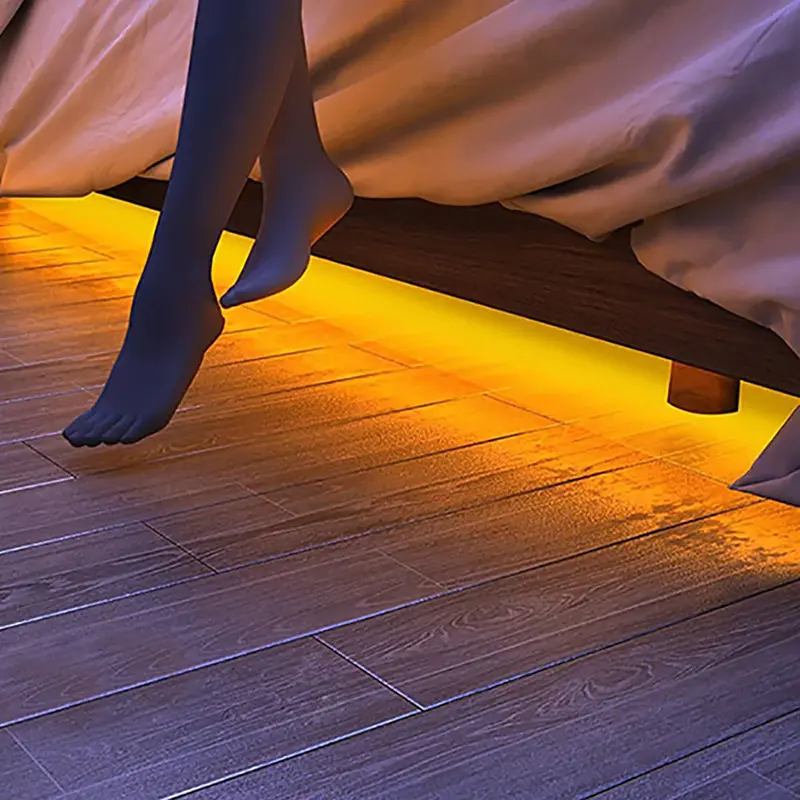
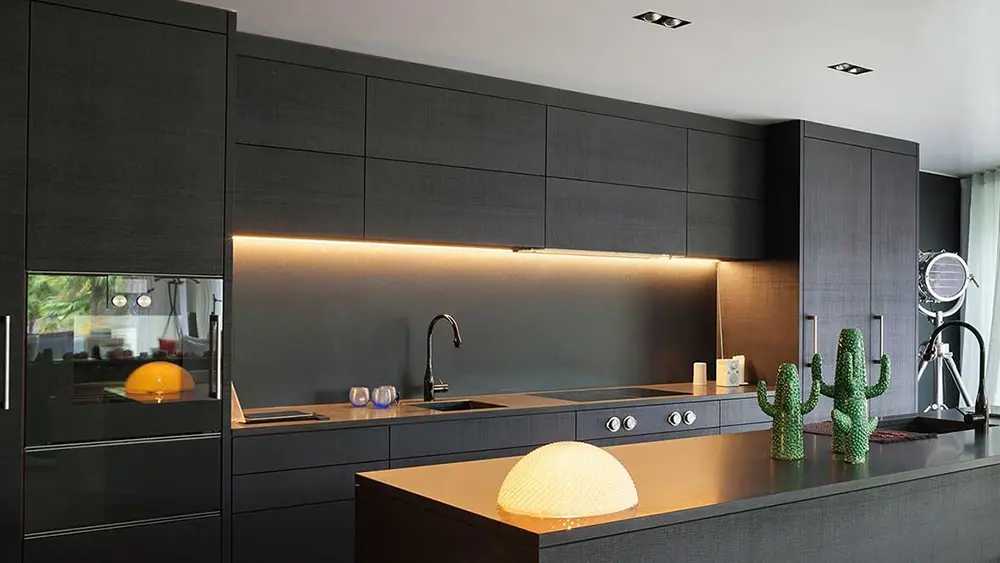
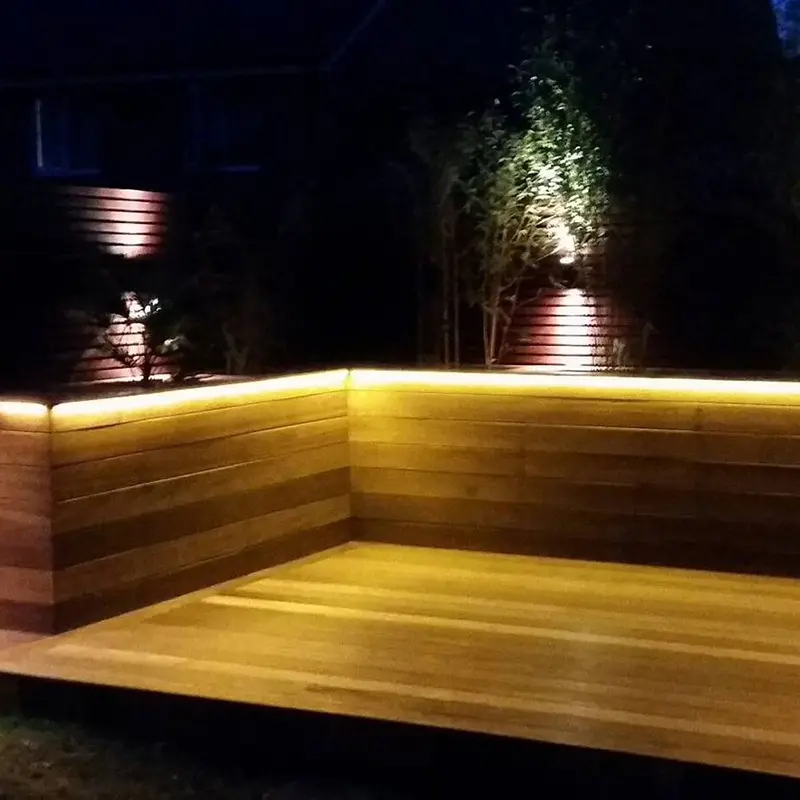


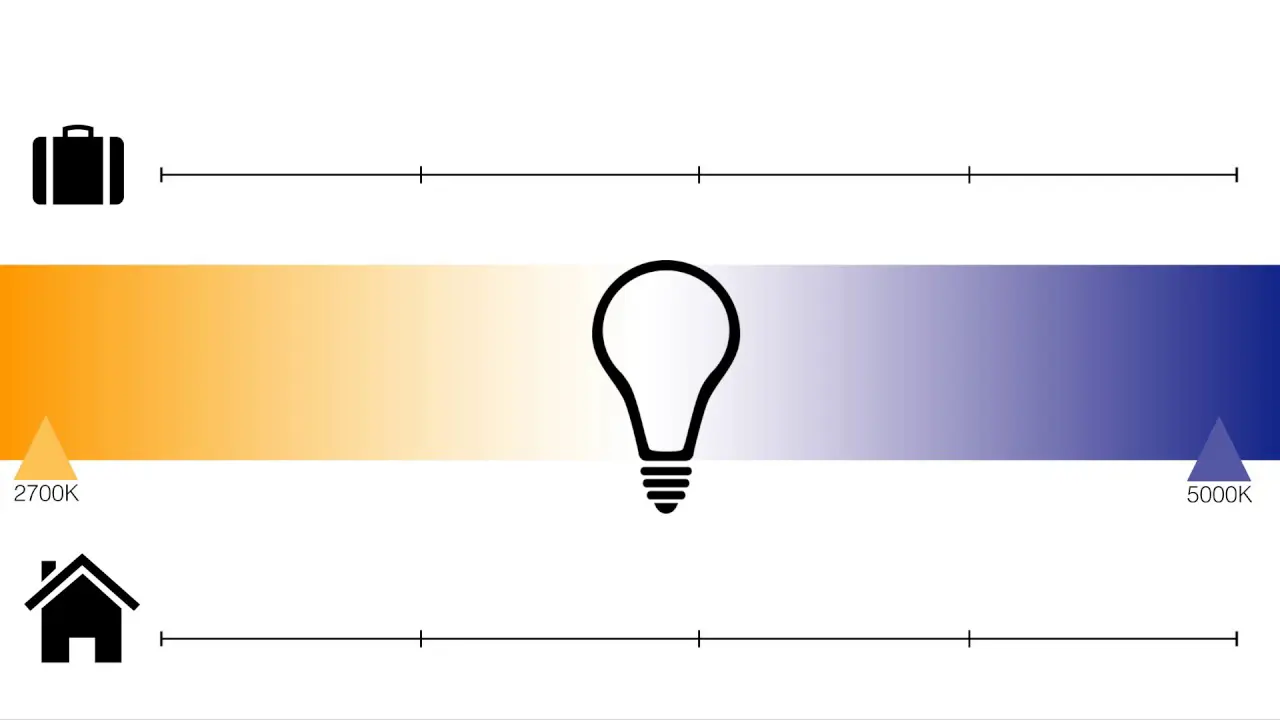
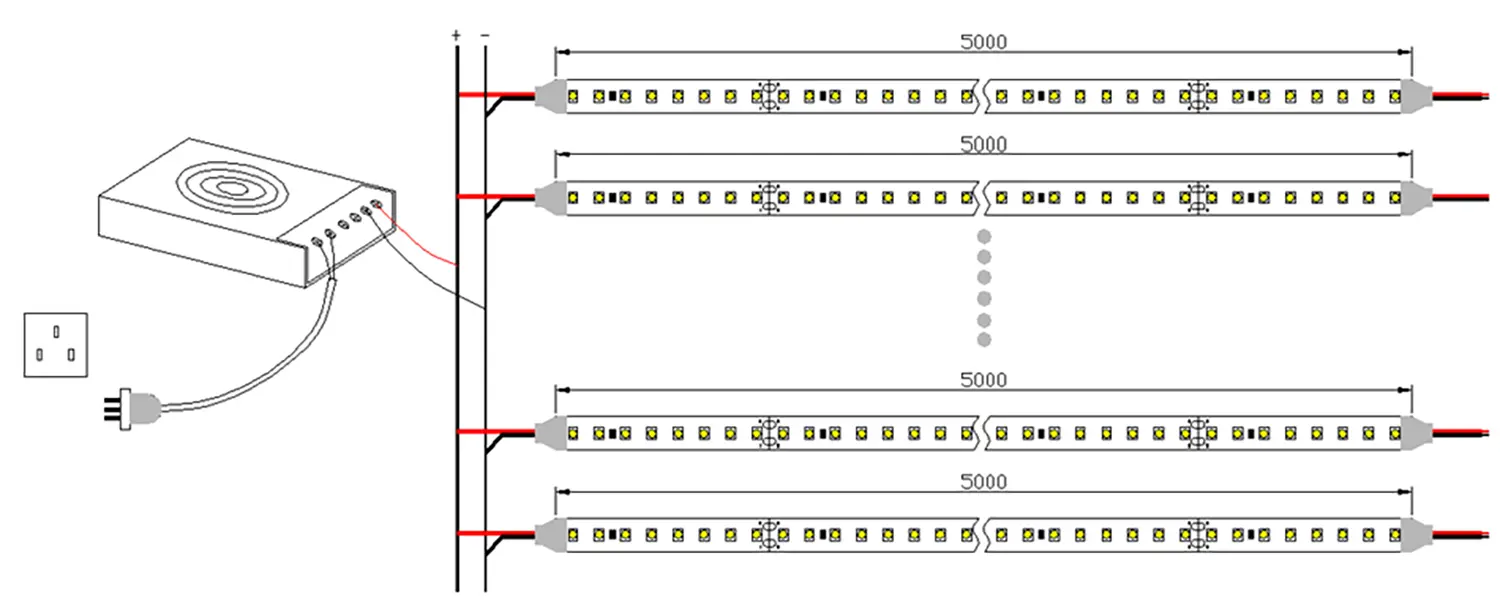
Skriv en kommentar
Vil du deltage i diskussionen?Du er velkommen til at bidrage!